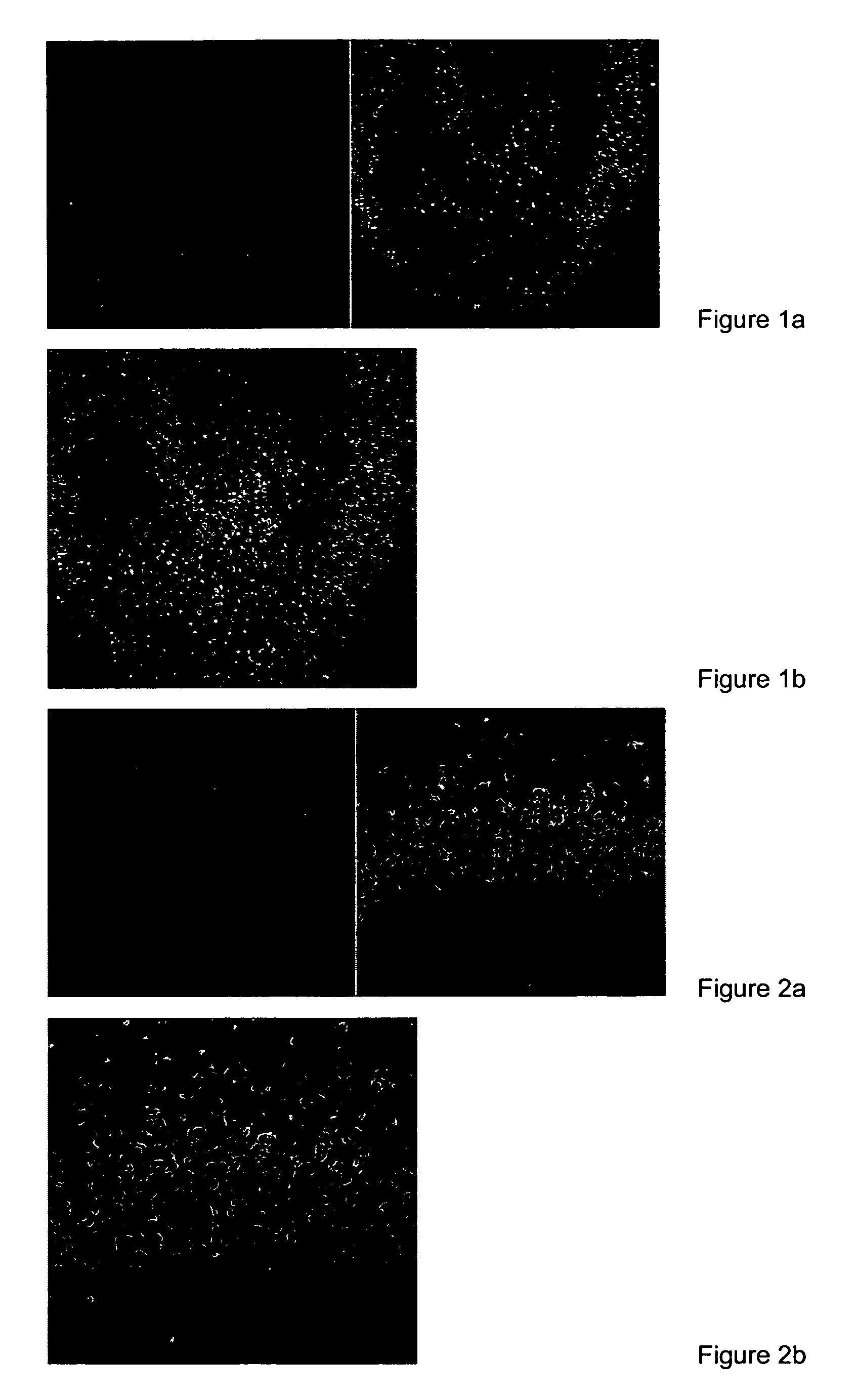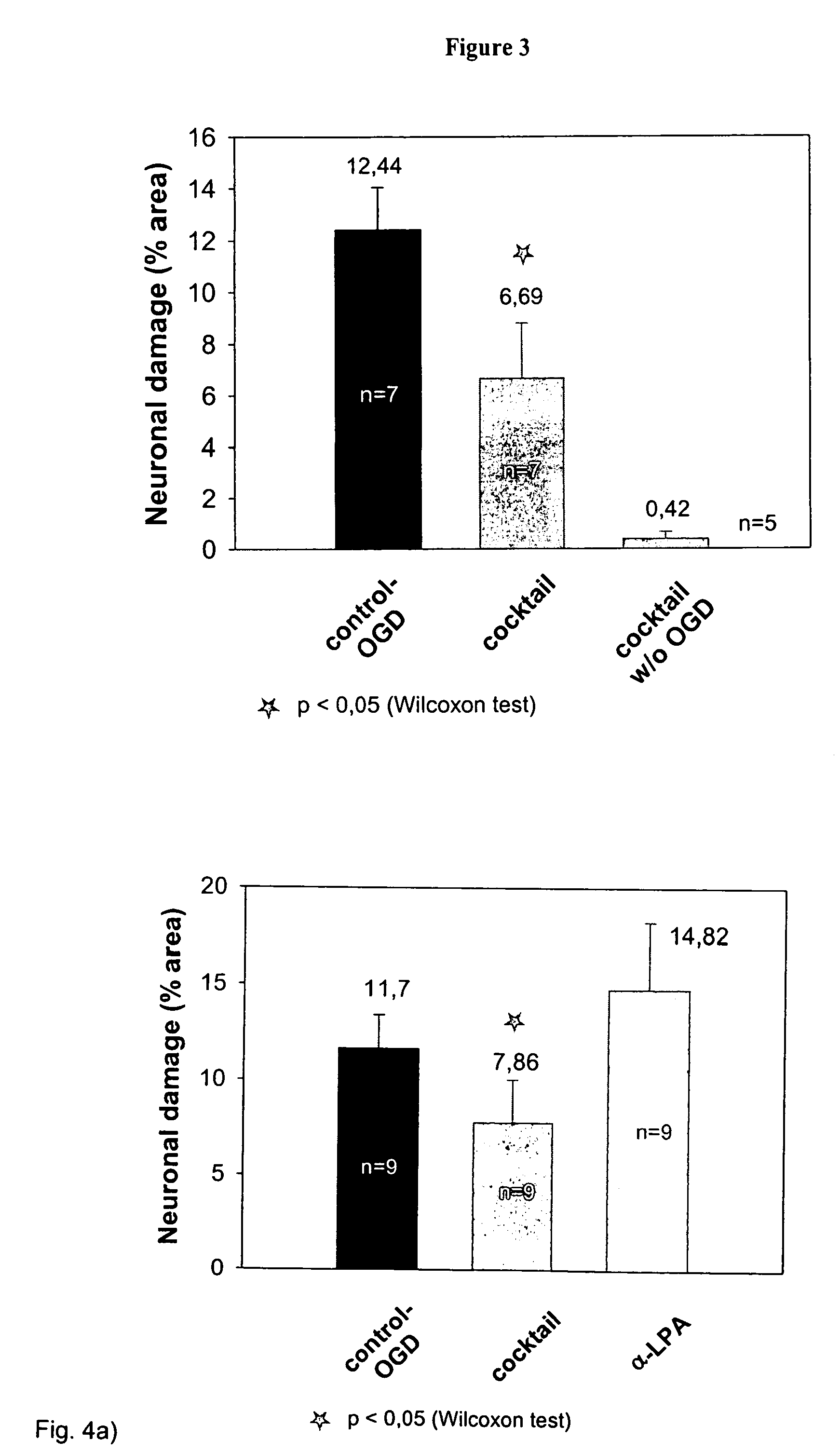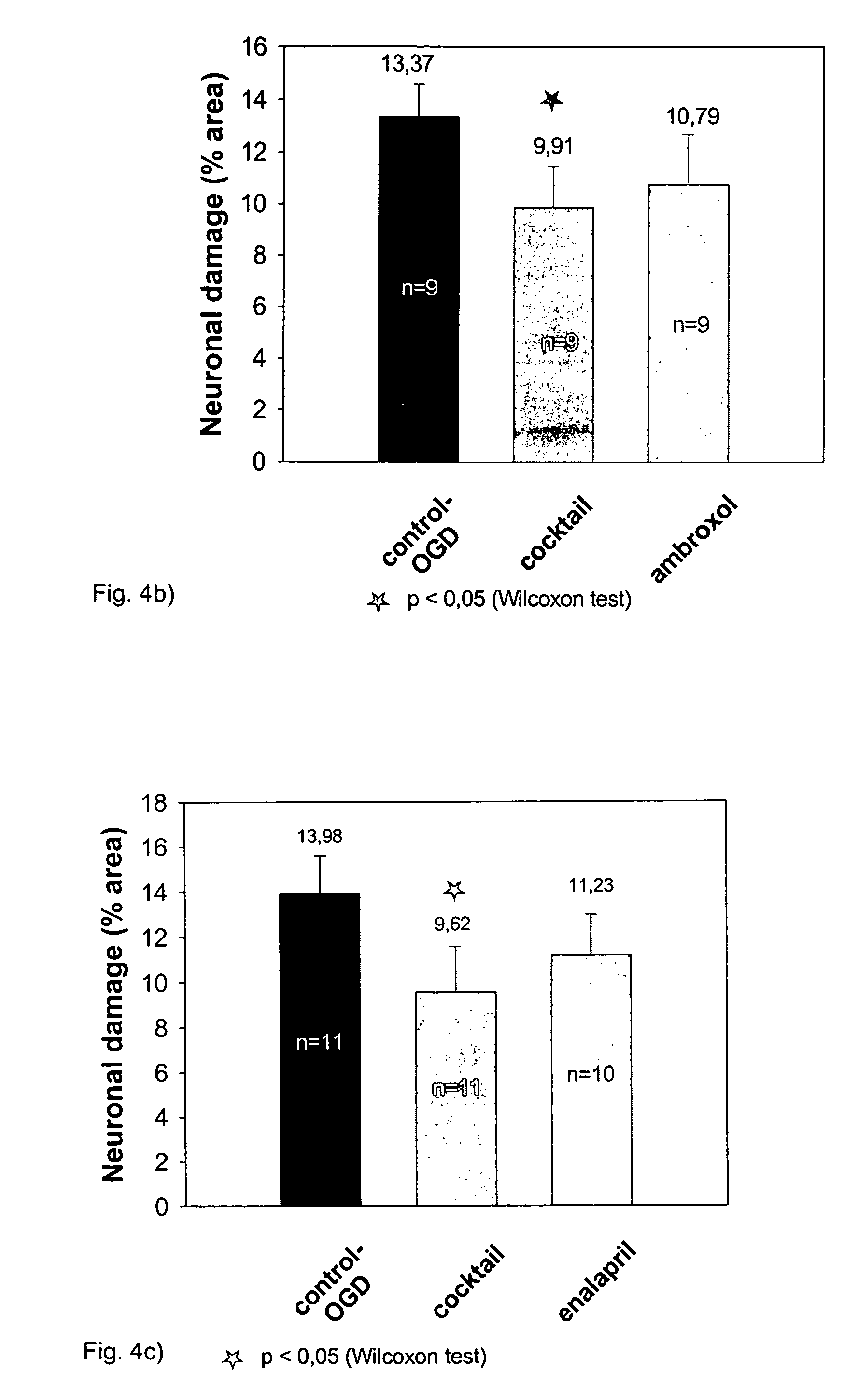Drug preparation comprising α-lipoic acid, ambroxol and/or inhibitors of the angiotensin-converting enzyme (ACE) and its use for the treatment of neurodegenerative diseases
a technology of angiotensin-converting enzyme and drug preparation, which is applied in the direction of biocide, plant growth regulator, animal husbandry, etc., can solve the problems of severe functional disturbance, loss of function, irreversible mental and physical handicap, etc., and achieves the effect of reducing neuronal damage processes and opening a large pharmaceutical potential
- Summary
- Abstract
- Description
- Claims
- Application Information
AI Technical Summary
Benefits of technology
Problems solved by technology
Method used
Image
Examples
example 1
[0058]In example 1, the novel and surprising finding is shown according to which neuronal cells have considerably less free thiol groups under physiological conditions than non-neuronal cells. The marking of free thiol groups was effected with the fluorescence dye 5-[and 6-](((chloromethyl-) benzoyl-) amino-) tetramethyl rhodamine (CMTMR). The reactive chloromethyl group of CMTMR reacts with free thiol groups of proteins independent of the type of cells, whereby those are made visible after specific excitation in the UV region.
[0059]FIG. 1 shows a view to organotypical hippocampal tissue cuts. Surprisingly, just the decidedly vulnerable neurons of the hippocampus formation (pyramidal cells) show a very low and, hence, hardly detectable content of free thiol groups.
[0060]This specifity becomes evident very clearly in FIGS. 1b and 2b. In those Figures, the results of a double marking are shown. In addition to a specific marker for free thiol groups (CMTMR), NeuroTrace (NT) was used as...
example 2
[0061]Influence of the combination of substances on the survival of neuronal cells after neurodegenerative events
[0062]For examining the neuroprotective effect of the thiol-reactive substances, the procedure of a transient ischemia for organotypical hippocampal tissue cuts was used [14-16], which procedure was standardized in our laboratory. By such a procedure, there are obtained three-dimensional cultivated explantates having a high prediction value for subsequent clinical experiments. In those tissue cultures containing neuronal as well as non-neuronal cells, highly complex intercellular connections are maintained largely. They are of extraordinary importance for the functionality of the whole CNS. The cerebral tissue cultures are exposed to a degenerative event which results into a death of neuronal cells in analogy to clinical situations.
[0063]The tissue cuts (375 μm) were prepared subsequently from the hippocampus of rats (P7). The cultivation of those cut cultures was effecte...
example 3
[0067]Comparison of the combined use of the combination claimed according to the invention with the effects of the single components.
[0068]In the course of these experiments, it was detected that an application of the single substances does not result into a significant neuroprotective effect. The experiments are based on the protocol described in Example 2. In the course of the experiments shown in FIGS. 4a to c, the protective effect of the cocktail was compared with the standard damage after OGD and with the effect resulting from an application of the single substances. It results clearly from all experiments that none of the tested single substances alone reduces the damage after a neurodegeneration, while the cocktail is capable of providing a significant protection. Tables 2a to c show the relevant statistical parameters.
[0069]
TABLE 2aAverageSpecifityNumberValueMedianSEMControl OGD911.7010.81.71Control OGD +9 7.86 5.532.18CocktailControl OGD +914.8213.543.40α-Lipoic Acid
[0070]...
PUM
| Property | Measurement | Unit |
|---|---|---|
| pore size | aaaaa | aaaaa |
| relative air humidity | aaaaa | aaaaa |
| physical | aaaaa | aaaaa |
Abstract
Description
Claims
Application Information
 Login to View More
Login to View More - R&D
- Intellectual Property
- Life Sciences
- Materials
- Tech Scout
- Unparalleled Data Quality
- Higher Quality Content
- 60% Fewer Hallucinations
Browse by: Latest US Patents, China's latest patents, Technical Efficacy Thesaurus, Application Domain, Technology Topic, Popular Technical Reports.
© 2025 PatSnap. All rights reserved.Legal|Privacy policy|Modern Slavery Act Transparency Statement|Sitemap|About US| Contact US: help@patsnap.com



